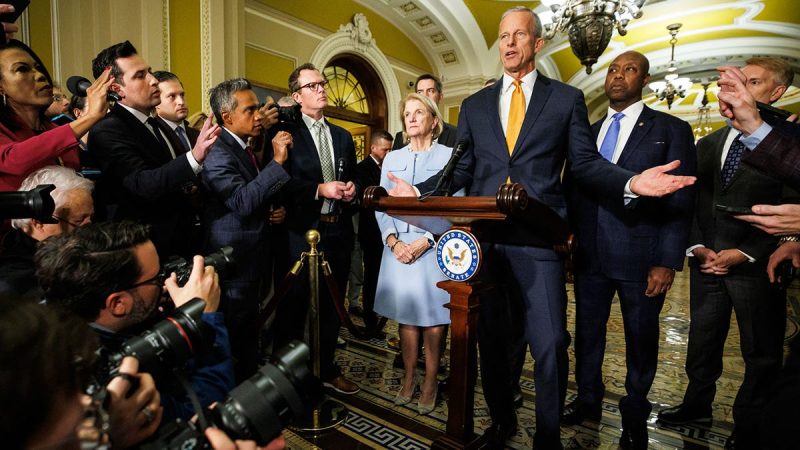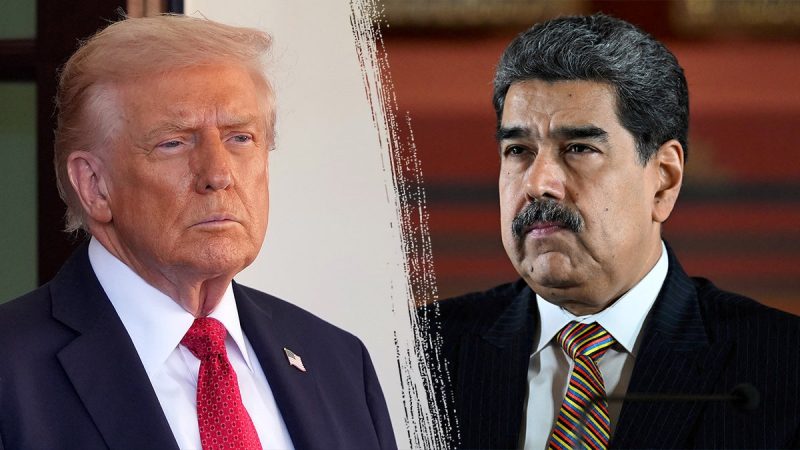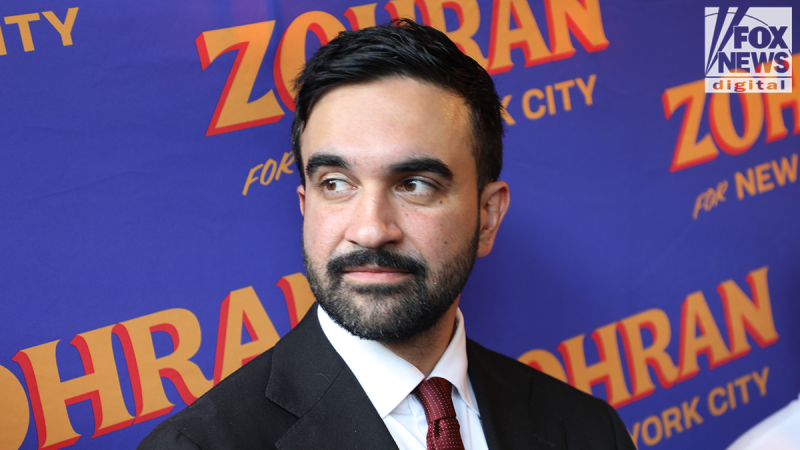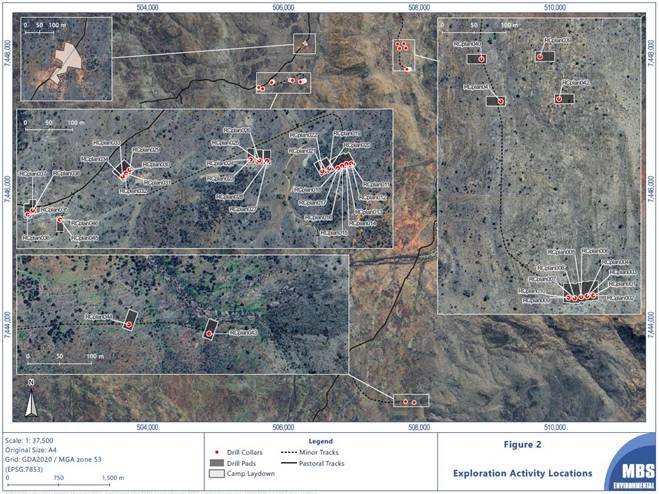
 Brightstar Resources (BTR:AU) has announced BTR strengthens leadership team to drive production growth
Brightstar Resources (BTR:AU) has announced BTR strengthens leadership team to drive production growth
Download the PDF here.

 Brightstar Resources (BTR:AU) has announced BTR strengthens leadership team to drive production growth
Brightstar Resources (BTR:AU) has announced BTR strengthens leadership team to drive production growth
Download the PDF here.


As the artificial intelligence (AI) market continues to grow, there are many AI stocks for investors to choose from on top exchanges like the NASDAQ, TSX and ASX.
AI technology has made strong inroads into several key industries, including logistics, manufacturing, finance, healthcare, customer service and cybersecurity.
While artificial intelligence has been around for a long time, this explosion in popularity is due to advancements in generative AI, starting with the release of OpenAI’s ChatGPT. Since then, many major tech firms entered the space with their own generative AI offerings or now include AI technology in their own innovative products.
A McKinsey technology trends report states that, ‘AI is a widely applicable, general-purpose technology with use cases in every industry and business function—and thus lots of innovation and interest—and it is scaling rapidly across the business landscape.’
According to Ascendix, there are around 90,000 AI companies worldwide, of which 32 percent are headquartered in the United States.
One of the major factors fueling growth in the American AI market, states Statista, is “the growing investments and partnerships among technology companies, research institutions, and governments.’
Below are three of the top US AI stocks by market cap. For more US AI stocks, check out our list of 12 generative AI stocks and 5 AI ETFs.
Market cap: US$4.59 trillion
The global leader in graphics processing unit (GPU) technology, NVIDIA is designing specialized chips used to train AI and machine-learning models for laptops, workstations, mobile devices, notebooks and PCs.
The company is partnering with a number of big-name tech firms to bring various key AI products to market.
Through its partnership with Dell Technologies (NYSE:DELL), NVIDIA is developing AI applications for enterprises, such as language-based services, speech recognition and cybersecurity.
The chipmaker has also been instrumental in the buildout of Meta Platforms’ (NASDAQ:META) AI supercomputer. Called the Research SuperCluster, it reportedly uses a total of 16,000 NVIDIA GPUs.
In early 2024, Taiwan Semiconductor Manufacturing Company (NYSE:TSM) and NVIDIA released the world’s first multi-die chip specifically designed for AI applications: the Blackwell GPU. Blackwell’s architecture allows for the increased processing power needed to train larger and more complex AI models.
NVIDIA’s biggest AI news for 2025 concerns its US$100 billion partnership with OpenAI announced on September 22. NVIDIA will fund a massive data center buildout to become the backbone of OpenAI’s superintelligence ambitions.
Market cap: US$3.9 trillion
Microsoft has committed billions to OpenAI, but the tech behemoth has also built its own AI solutions based on the chatbot creator’s technology: Bing AI and Copilot. OpenAI officially licensed its technologies to Microsoft in 2020.
In late May 2024, Microsoft unveiled its Copilot+ Windows PCs, its first range of AI-equipped PCs. According to the company, they are the “fastest, most intelligent Windows PCs ever built.”
An update to Windows 11 in October 2024 included upgrades to the Copilot artificial intelligence platform capabilities, including the introduction of the ability to speak directly to the AI helper.
Microsoft’s moves into generative AI have translated into higher revenues for its Azure cloud computing business and a higher market capitalization — the tech giant pushed past the US$3 trillion mark in January 2024 and its managed to maintain that level up even after the March 2025 stock sell-off as a result of tariffs and trade wars by US President Donald Trump.
Microsoft announced an US$80 billion investment in US-based AI infrastructure earlier this year, followed by the integration of its Copilot AI tools into Microsoft 365. In October 2025, the company launched an open source framework that will allow developers to build out agentic AI applications.
Market cap: US$2.96 trillion
Alphabet holds court with both Microsoft and NVIDIA as part of the tech sector’s Magnificent 7, and its foray into AI has similarly brought the tech giant much success. The company has created the AI chatbot Gemini, formerly known as Bard, which is integrated into products such as its Google Suite, the Chromecast browser and the Google Pixel phone line.
Alphabet’s market cap surpassed the US$2 trillion mark in April 2024. That same month, Google introduced a custom AI chip designed for its cloud services customers. The technology uses British semiconductor company Arm Holding’s (NASDAQ:ARM) AI architecture. In the same week, Google revealed its new A3 Mega AI processor based on NVIDIA’s H100 Technology.
At the NVIDIA GTC 2025 conference, Alphabet and NVIDIA announced a series of AI-focused partnerships in the sectors of robotics, drug discovery and manufacturing.
As of October 2025, Alphabet is testing a Gemini AI app redesign with the goal of improving user experience and increasing engagement through more visuals and scrolling feed rather than a chat interface.
Recognized as a world-leading AI research hub, Canada ranks eighth out of 83 countries in the Global AI Index. Since 2017, the Canadian government has invested hundreds of millions of dollars into accelerating the research and commercialization of AI technology in the country through the Pan-Canadian AI Strategy.
Research by IBM (NYSE:IBM) shows Canadian businesses are increasingly adopting AI, with 56 percent of IT professionals in large enterprises reporting that they plan to increase deployment the technology in their operations for 2025.
Below are three of the top Canadian AI stocks by market cap. For more Canadian AI stocks, take a look at our list of 5 small-cap Canadian AI stocks.
Market cap: C$27.89 billion
Montreal-based CGI is among the world’s largest IT systems integration companies, and offers a wide range of services, from cloud migration and digital transformation to data analysis, fraud detection and even supply chain optimization. Its more than 700 clients span the retail, wholesale, consumer packaged goods and consumer services sectors worldwide.
Through a partnership with Google, CGI is leveraging the Google Cloud Platform to strengthen the capabilities of its CGI PulseAI solution, which can be integrated with existing applications and workflows.
CGI is aggressively working to expand its generative AI capabilities and client offerings. In early March 2024, the company launched Elements360 ARC-IBA, an AI powered platform for brokers and insurers to settle accounts in the UK broking industry. Later in September, CGI signed the EU’s Artificial Intelligence Act pledge to work for trustworthy and safe AI development.
The company’s AI-powered CGI DigiOps toolkit won the Association of Chartered Certified Accountants (ACCA) India Award 2024 for Excellence in Digital Transformation in February 2025. CGI DigiOps is used in several industries, including the energy and utilities, and retail sectors. “This award for digital transformation excellence is a testament to our commitment to delivering end-to-end AI-powered solutions to achieve meaningful outcomes for our clients,’ Rakesh Aerath, President, CGI Asia Pacific Global Delivery Centers of Excellence.
Market cap: C$13.52 billion
Ontario-based OpenText is one of Canada’s largest software companies. The tech firm develops and sells enterprise information management software. Its portfolio includes hundreds of products in the areas of enterprise content management, digital process automation and security, plus AI and analytics tools.
OpenText serves small businesses, large enterprises and governments alike. Its AI & Analytics platform has an open architecture that enables integration with other AI services, including Google Cloud and Azure. It can leverage all types of data, including structured or unstructured data, big data and the internet of things to quickly create interactive visuals.
Last year, OpenText launched Cloud Editions 24.1, which includes enhancements to its OpenText Aviator portfolio.
OpenText has also been expanding its AI-powered cybersecurity offerings. In early 2025, the company launched OpenText Core Threat Detection and Response, which leverages AI-driven behavioral analytics to detect insider threats and cyberattacks.
The company sold of its eDocs business unit in October 2025 in order to increase focus on building out its AI capabilities and offerings.
Market cap: C$1.04 billion
Propel Holdings is a fintech company that has designed an AI-powered lending-as-a-service platform for consumers seeking alternative access to credit outside of the traditional banking system. Its operating brands include Fora Credit, CreditFresh, MoneyKey and QuidMarket.
With operations in Canada, the US and the UK, the company claims that is has ‘helped consumers access over one million loans and lines of credit and over two billion dollars in credit.’
In September, Propel ranked sixth on the TSX30 2025 annual ranking, which recognizes the 30 best-performing companies over a three-year period on the Toronto Stock Exchange. The company also ranked 147th in the 2025 Report on Business magazine’s ranking of Canada’s top growing companies by three year revenue growth, with Propel’s revenue climbing 247 percent.
Australia’s AI innovation and number of AI companies are growing consistently, according to a June 2025 government report on the country’s AI ecosystem.
According to the report, of the 412 public AI firms it identified, ‘Most public AI companies are well-established organisations that have operated in Australia for years or decades. Their expanding AI capabilities primarily stem from strategic shifts, increased investment in internal AI capabilities and acquisitions of AI-developing firms.’
Below are three of the top Australian AI stocks by market cap. For more ASX AI shares, check out our list of the 5 biggest ASX AI stocks.
Market cap: AU$10.8 billion
NEXTDC is Australia’s leading data center operator, with facilities currently operational or under development throughout Australia. The company also has data centers under development in New Zealand, Malaysia and Japan.
NEXTDC’s clients include some of the world’s largest cloud providers, such as Amazon (NASDAQ:AMZN) Web Services, Microsoft Azure, and Alphabet’s Google Cloud. The company also obtained NVIDIA’s DGX-Ready Data Centre Program certification, enabling it to optimize NVIDIA’s AI platforms and power advanced AI data centers in Australia.
In its financial report for its fiscal 2025 ended June 30, 2025, the company reported total revenue of AU$427.2 million, a 6 percent increase from the same period in the year prior. Its net revenue was up 14 percent to AU$350.2 million.
NEXTDC is the 2025 recipient of the Australian Competitive Strategy Leadership Recognition in the data center services industry.
Market cap: AU$2.56 billion
Megaport network-as-a-service provider that offers a software-defined network (SDN) platform to businesses, data centers and cloud providers. Although it calls Queensland, Australia, home, the company has operations in over 25 countries.
Megaport has strategic partnerships with cloud service providers like Amazon’s (NASDAQ:AMZN) Amazon Web Services and Microsoft’s (NASDAQ:MSFT) Microsoft Azure. Users of its Megaport Virtual Edge can use devices such as routers and firewalls without the need for physical hardware in a data center.
The scalability and on-demand nature of Megaport’s technology makes it ideal for businesses employing AI tools. The company’s AI Exchange platform connects customers with an ecosystem of over 30 AI service providers.
Market cap: AU$1.01 billion
Sydney-based Nuix is a leading provider of data processing, investigative analytics and intelligence software. Its client base includes legal, compliance, forensic investigations, cybersecurity and data governance sectors.
The company’s patented Nuix Neo technology uses advanced deep learning techniques to better train AI models for more efficient, scalable and cost-effective document classification. Launched in July 2023, Nuix Neo is accessed through a browser-based, collaborative interface, and includes end-to-end automation, investigative analytics and AI-enabled workflows.
This year, Nuix inked a deal with Indian multinational technology firm Tech Mahindra to provide AI-driven cyber risk management and data analytics tools. Tech Mahindra services the banking, insurance, telecommunications and government sectors.
Additionally, in mid-September, the company won a multiyear contract to supply forensic analysis software to the tax authority of Rhineland-Palatinate state in Germany.
Google and Microsoft are battling it out for king of the AI hill. While Goldman Sachs sees Alphabet’s Google as leading the AI race, other analysts are pointing to Microsoft as the clear frontrunner. Microsoft stands to benefit in a big way from its billions of dollars investment in OpenAI’s ChatGPT as advancements in generative AI may have the potential to increase the company’s revenues for its Azure cloud computing business.
North America is the global hotspot for advancements in AI technology and is home to the majority of the world’s largest AI providers. Techopedia positions the US as the primary hub for AI development, and many of the world’s leading tech giants are headquartered there. According to the report, China comes in a close second.
Securities Disclosure: I, Melissa Pistilli, hold no direct investment interest in any company mentioned in this article.


Minister for Resources and Northern Australia Madeleine King said on Saturday (November 1) that Australia and Canada have strengthened their critical minerals partnership with a new joint declaration of intent.
The new agreement is between Australia’s Department of Industry, Science and Resources and the Department of Natural Resources of Canada.
It builds on the Australia-US rare earths deal signed by Prime Minister Anthony Albanese and President Donald Trump, under which both nations committed to investing over US$1 billion each in initial projects within the next six months.
King signed with Canadian Minister for Resources and Energy Tim Hodgson at the G7 Energy and Environment Ministers’ Meeting in Toronto.
“Like Australia, (Canada) holds some of the world’s most significant critical minerals and rare earths reserves,” she commented, adding that it is important for both producing countries to collaborate.
“From defence applications to clean manufacturing, critical minerals are at the heart of the economic and national security of both our countries … (We need to) ensure both our communities and industry can benefit from growing demand.”
While the joint declaration is not legally binding and comes with no financial commitment, it highlighted that an in-person ministerial will be established within 6 months of the date of signing.
The ministerial will be responsible for assessing progress and establishing a work plan for the coming year, to be led by King and Hodgson themselves.
Key areas of the partnership include project financing, investment and trade, maximising assets to co-invest in “commercially viable projects.”
The countries also agreed to share best practices in meeting ESG standards and project development and execution. Joint research and sharing of information on stockpiling and respective project development pipelines were also cited.
No target projects have been mentioned, but among Australia’s awaited critical minerals projects is the Dubbo rare earths project by Australian Strategic Materials (ASX:ASM,OTC Pink:ASMMF).
Dubbo received AU$5 million under the Australian government’s International Partnerships in Critical Minerals (IPCM) Program in October 2024, and an AU$6.5 million grant from the government’s Critical Minerals Development Program in May 2023.
It is targeting a final investment decision in 2026 and is expected to deliver up to 1,000 local jobs during the construction period and approximately 270 jobs once operational.
For Canada, the Matawinie mine near Montreal, Quebec by Nouveau Monde Graphite Inc. (NYSE:NMG,NOU:CA) was first on its list of investments under the G7 Critical Minerals action plan, wherein it mentioned a letter of interest for the project for up to US$430 million from Export Development Canada.
Nouveau Monde Graphite is also reportedly on its journey to create the largest fully integrated natural graphite production facility in North America.
“By working together, we can build secure, diversified and sustainable critical minerals supply chains,” said King.
Securities Disclosure: I, Gabrielle de la Cruz, hold no direct investment interest in any company mentioned in this article.

Kimberly-Clark said on Monday it will buy Tylenol maker Kenvue KVUE.N in a cash-and-stock deal valued at about $48.7 billion, to create one of the biggest consumer health goods companies in the United States.
Shares of Kenvue were up 18% in premarket trading, while Kimberly-Clark‘s shares were down 12.5%.
Kenvue has been under a strategic review, leadership shake-up, and mounting litigation risks. It came under fresh scrutiny following President Donald Trump’s comments linking its popular pain medicine Tylenol to autism.
The deal will bring together brands including Neutrogena, Huggies and Kleenex under a consumer health and personal care company with expected combined annual revenues of roughly $32 billion.
Sources in June told Reuters the strategic review of its operations could include a sale or breakup of the company that had been spun off from healthcare conglomerate Johnson & Johnson JNJ.N in 2023.
Kenvue‘s shareholders will receive $3.50 per share and 0.15 Kimberly-Clark shares for each Kenvue share held. That implies a per-share deal value of $21.01, or an equity value of $40.32 billion, according to Reuters calculations.

Senate Majority Leader John Thune, R-S.D., and Senate Republicans are considering pushing back the House-passed government funding extension in a bid to give lawmakers more time to pass spending bills.
The House’s continuing resolution (CR) would reopen the government until Nov. 21. That bill has been blocked by Senate Minority Leader Chuck Schumer, D-N.Y., and Senate Democrats 13 times so far and has pushed the shutdown into record-breaking territory.
Given that the original seven-week plan has now shrunk to just three weeks as the shutdown drags on, Thune and the Senate GOP realize that more time will be needed to pass appropriations bills.
‘The House-passed CR is, you know, the idea that we could get any appropriations bills done, you know, by November the 21st now, that date’s lost,’ Thune said.
The objective now is to produce a CR that extends the funding deadline, possibly into January. Thune said that he was ‘certainly open’ to extending the deadline into next year. Senate Republicans tried to get a package of three bills on the floor, along with possibly more, late last month. But that move was blocked by Senate Democrats.
‘As you look at the calendar, if you want to do normal appropriations work, you look at how long it takes to get bills across the floor in the Senate and through the House,’ he said. ‘It’s, you know, the longer sort of runway there is better.’
To do so would either require a fresh CR, or the House-passed bill could be amended. Still, anything that Republicans hash out will need to break through the 60-vote threshold in the Senate and require support from Democrats.
Any changes to the House’s bill, or a new bill, would also need to be sent back to the House, which House Speaker Mike Johnson, R-La., has kept out of session now for over six weeks.
Johnson, when asked about time running out on the House-passed CR, didn’t say whether lawmakers would need to craft a new one or extend the Nov. 21 deadline. He blamed Senate Democrats, however, for running out the clock.
‘We’re very mindful of the clock,’ Johnson told Fox News’ Will Cain on ‘The Will Cain Show.’ ‘And the great irony here is the Democrats are the ones that are taking the time off that clock. We needed it.’
But lawmakers in the lower chamber already expected that more time would be needed given the blockade in the upper chamber.
House Appropriations Committee Chairman Tom Cole, R-Okla., told Fox News Digital in an interview late last month that he believed a new CR would be needed, ‘having wasted this much time.’
Asked about what timing he believed would be realistic, Cole said he could see a short-term measure ‘probably into early January’ in a bid to avoid a colossal, year-end funding bill known as an omnibus where all 12 appropriations bills and numerous spending and policy riders are crammed into one bill.
‘In both chambers, both parties, there’s a dread of what’s called the Christmas omnibus, where we put you right up to the edge of Christmas, and they don’t let you go home to your family until you pass a God awful omnibus bill. We don’t want to do that to our members,’ he said.
But there’s another faction within the GOP calling for a longer-term bill. A source familiar with the House Freedom Caucus told Fox News Digital last month that its chairman, Rep. Andy Harris, R-Md., would advocate for a bill extending into December 2026 — provided he agreed with the details in the measure itself.
Meanwhile, Thune said that he was optimistic that the shutdown could end this week. The Senate is nearing yet another scheduled recess, this time for Veterans’ Day next week, that could see lawmakers leave Washington, D.C., with the government still closed.
He wasn’t ready to outright cancel the recess, but noted that ‘if we don’t start seeing some progress or some evidence of that by at least the middle of this week, it’s hard to see how we would finish anything by the end of the week.’
‘I think we’re getting close to an off-ramp here, but, you know, this is unlike any other government shutdown,’ he said.

President Donald Trump is ordering the aircraft carrier USS Gerald R. Ford to head to the Caribbean as he ramps up his crusade against drugs — marking the first time a carrier has conducted an operational deployment in the region in more than 30 years.
Trump has built up naval assets in the region as attacks against alleged drug boats have increased since September, but sending an aircraft carrier is an unprecedented move. A warship like the Ford hasn’t participated in military operations in the region since 1994, when two carriers were dispatched to respond to political unrest in Haiti for Operation Uphold Democracy, according to U.S. Southern Command’s (SOUTHCOM) records shared with Fox News Digital.
The Ford’s deployment comes as Trump has signaled that Venezuelan President Nicolás Maduro may not be in office much longer. The Trump administration has conducted 15 strikes in the Caribbean, while U.S. lawmakers have raised concerns about their legality and a broader conflict in the region.
During Operation Uphold Democracy, aircraft carriers USS Dwight D. Eisenhower and USS America headed to the region as part of a multinational intervention, after Haitian Lt. Gen. Raoul Cedras led a military coup in 1991 that ousted the island’s first freely elected president, Jean-Bertrand Aristide.
In July 1994, the United Nations passed a resolution authorizing the use of military force to restore democracy in Haiti, paving the way for Operation Uphold Democracy to launch in September 1994 as a military buildup designed to pressure Cedras’ regime to step down, according to the State Department’s Office of the Historian.
At the time, President Bill Clinton justified the intervention, which involved nearly 25,000 U.S. troops, as necessary to remove the Cedras regime after employing ‘every diplomatic avenue possible.’
Clinton said in a radio address Sept. 17, 1994, that the Cedras regime had two options: either leave peacefully or be ousted forcefully.
‘The remaining question is not whether they will leave but how they will leave,’ Clinton said in a radio address Sept. 17, 1994. ‘They can go peacefully and increase the chances for a peaceful future and a more stable future for Haiti in the near term, not only for all those whose democracy they stole but for themselves as well. They can do that, or they will be removed by force.’
In addition to military forces, Clinton also announced that former president Jimmy Carter, former Chairman of the Joint Chiefs of Staff Gen. Colin Powell and Chairman of the Senate Armed Services Committee Sen. Sam Nunn, D-Ga., had departed for Haiti in a final attempt to secure a peaceful transfer of power.
U.S. forces started to arrive in Haiti Sept. 19, 2024, while diplomatic negotiations between the U.S. delegation and Cedras’ regime were underway, ultimately prompting Cedras’ regime to surrender and allowing Aristide to return to power.
Since Operation Uphold Democracy, carriers have sailed through SOUTHCOM’s waters for several exercises and supported humanitarian efforts. For example, the USS George Washington completed exercises in the region as part of the Southern Seas 2024 deployment aimed at facilitating maritime partnerships with allies as part of a homeport change from Norfolk, Virginia, to Yokosuka, Japan.
The carrier participated in these exercises in 2008 and 2015 during homeport changes between the East Coast and Japan. Altogether, there have been a total of 10 Southern Seas missions since 2007, according to SOUTHCOM.
Additionally, the aircraft carrier USS Carl Vinson also assisted with humanitarian relief efforts in 2010 after Haiti suffered a massive earthquake as part of Operation Unified Response, according to Naval History and Heritage Command.
Meanwhile, Trump is ramping up strikes against alleged drug boats in the Caribbean — totaling 15 strikes since the beginning of September — stoking concerns from lawmakers on both sides of the aisle about whether they are legal. For example, Sens. Adam Schiff, D-Calif., Tim Kaine, D-Va., and Rand Paul, R-Ky., introduced a war powers resolution prohibiting U.S. armed forces from engaging in ‘hostilities’ against Venezuela.
‘The Trump administration has made it clear they may launch military action inside Venezuela’s borders and won’t stop at boat strikes in the Caribbean,’ Schiff said in a statement Oct. 17.
However, Sen. Lindsey Graham, R-S.C., said Oct. 26 that the Trump administration has the authority it needs to conduct these strikes, and that Trump has decided its ‘time’ for Maduro to go.
The White House did not respond to a request for comment from Fox News Digital.
The Trump administration repeatedly has stated it does not recognize Maduro as a legitimate head of state, and claims he is instead a leader of a drug cartel. Likewise, the Trump administration increased the reward for information leading to Maduro’s arrest to $50 million in August, claiming he is ‘one of the largest narco-traffickers in the world.’
After the Trump administration announced the Ford would head to SOUTHCOM’s area of operations, Maduro accused Trump of ‘fabricating a new eternal war.’
‘They promised they would never again get involved in a war, and they are fabricating a war,’ Maduro said in a national broadcast on Oct. 24.
Meanwhile, Trump said Sunday in an interview with CBS’ ’60 Minutes’ that although he doesn’t expect a war with Venezuela, he believes Maduro’s days are limited when asked about ordering the carrier to the region.
The Ford may be the Navy’s newest carrier, but it’s already been quick to respond to several significant conflicts since its first full-length deployment in 2023. For example, the Pentagon sent the Ford to the Eastern Mediterranean in October 2023 after Hamas’ initial attack on Israel.
While in the Caribbean, the Ford is expected to conduct strike operations on land, and provide close air support for special operations troops, according to experts.
‘I estimate the FORD will be doing strike operations against narcotics trafficking and manufacturing sites ashore as well as providing close air support to special operations troops,’ Bryan Clark, director of the Hudson Institute think tank’s Center for Defense Concepts and Technology, said in a Monday email to Fox News Digital.
Brent Sadler, a senior fellow for naval warfare and advanced technology at The Heritage Foundation, a conservative think tank in Washington, said that the carrier’s deployment seeks to put additional pressure on Venezuela, so Caracas doesn’t retaliate following the U.S. military strikes in the region.
‘The Ford’s arrival in SOUTHCOM area is not unprecedented but given the ongoing attacks on Cartel boats significant. I see this move as intended to deter Venezuela from escalating the crisis and providing the President extra options should he want to increase the attacks on the Cartels,’ Sadler said in an email to Fox News Digital on Monday. ‘That said, I would anticipate the Ford’s air wing being very active in air surveillance and defense.’

President Donald Trump issued scads of Truth Social posts on Sunday backing politicians for re-election, including GOP Arkansas Gov. Sarah Huckabee Sanders and a slew of House Republicans.
‘Sarah Huckabee Sanders has my Complete and Total Endorsement for Re-Election — SHE WILL NOT LET YOU DOWN!’ the president exclaimed in one post.
Sanders, who served as Trump’s White House press secretary during a portion of his first term, is the daughter of U.S. Ambassador to Israel Mike Huckabee, a former Arkansas governor.
She thanked Trump.
‘Thank you, President @realDonaldTrump! It’s an honor to have your endorsement, and Arkansas stands with you in the fight to Make America Great Again!’ she declared in a post on X.
Trump also expressed his support for many House Republicans, including Reps. Jim Jordan and Warren Davidson of Ohio, James Comer of Kentucky, and many others.
‘Jim Jordan is a very good friend, fighter, and WINNER, and has my Complete and Total Endorsement for Re-Election — HE WILL NEVER LET YOU DOWN!’ the president declared in a Truth Social post.
The GOP will be trying to maintain its majorities in the House and Senate during the 2026 midterm elections. Election Day will be exactly one year from today, on Nov. 3, 2026.

European left-wing politicians are crossing the Atlantic to study a campaign model they see as a blueprint for revival — the campaign of New York Assemblyman Zohran Mamdani, a Democratic Socialist whose grassroots machine has captured attention far beyond his Queens district.
According to a Politico Europe report on Monday, far-left delegations from France, Germany and the U.K. visited New York this week to observe Mamdani’s operation firsthand. Among them were the deputy leader of the U.K. Green Party; a parliamentary officer for Germany’s Left (Die Linke) Party; as well as a French member of the European Parliament, with the goal of translating what they see as a successful campaign into more victories for Europe’s hard-left parties.
Alan Mendoza, executive director of the London-based Henry Jackson Society, told Fox News Digital, ‘Nobody would have thought New York would succumb to this five years ago. But there are certain conditions — a problematic economy, cost-of-living issues, and weak opposition — that make it fertile ground. Those conditions certainly exist in many European cities, so you can see an immediate crossover.’
Mendoza added, ‘It’s no surprise they’re coming to study Mamdani’s campaign,’ he said. ‘It looks like it’s going to be a very successful one, and the fact that somebody with his views and policies looks like they’re about to be elected as mayor of one of the most famous cities in the world is a boon to all those who share his politics internationally.’
Mendoza described Mamdani as a ‘trailblazer’ for hard-left movements that have often struggled to win major offices in Western democracies. ‘He’s bringing victory where there has always previously been defeat for politicians of the far left,’ he said. ‘His tactics, his style, his pronouncements — his form of forging a governing coalition, are going to be of keen interest to similar hard leftists around the world.’
In New York, Mamdani has built his base through neighborhood-level activism, which European politicians see as a path to reenergize voters. The former leader of the U.K.’s Labour Party, Jeremy Corbyn, who now leads the upstart Your Party, said on social media that he and his team phone banked for Mamdani.
Corbyn shared the phone-banking link which leads a website organized by the Democratic Socialists of America’s NYC chapter which is urging volunteers to mobilize voters for Mamdani.
Mendoza warned that replicating Mamdani’s ideological platform could deepen polarization. ‘Europe is already more statist and more left-wing as a rule than America anyway,’ he said. ‘So if he can win in New York, why can’t a hard leftist win in Europe? The question is whether those policies would actually work — and history shows they don’t.’
Mendoza dismissed identity as a driving factor behind Mamdani’s success, despite debates over his immigrant background. ‘It’s not an ethnicity question,’ he said. ‘It’s a question of what his ideology is — and that can be shared by people whether they’re born in a country or not.’
Fox News’ Emma Bussey contributed to this report.


The $14.1 million project, announced at the G7 Energy and Environment Ministers’ Meeting, unites Canadian, Ukrainian, and American partners to produce ultra-high-purity graphite for global battery, defence, and advanced-material markets.
Focus Graphite Inc. (TSXV: FMS,OTC:FCSMF) (OTCQB: FCSMF) (FSE: FKC0) (‘Focus’ or the ‘Company’), a leading developer of high-grade flake graphite deposits and innovator of next-generation lithium-ion battery technology, is pleased to announce that it has been selected by Natural Resources Canada (‘NRCan’) under the Global Partnerships Initiative (‘GPI’) for conditional approval of a non-repayable contribution of up to $14,062,500 pending final due diligence. The funding will support Focus Graphite’s project, ‘Transformation of Canadian Flake Graphite into Ultra-High Purity Battery & Advanced Materials Using Electrothermal Fluidized Bed Technology’ (the ‘Project’). The Project unites Canadians, Ukrainian, and American partners to produce ultra-high purity graphite for global battery, aerospace, defence, and advanced material markets.
Highlights:
Environmentally Friendly Technology: This continuous process produces ultra-high purity graphite with zero liquid waste, lower emissions, and an ESG-aligned pathway to supply advanced battery, defence, aerospace, and clean technology markets.
International Collaboration: Engineering led by Ukraine’s Thermal & Material Engineering Center, using Canadian graphite feedstock and U.S.-based American Energy Technologies Company’s expertise in electrothermal purification, with final assembly in Canada.
BEACONS Battery Prototyping Partnership: Focus has partnered with the University of Texas at Dallas, representing the BEACONS Battery Prototyping Facility, a U.S. Department of War-supported research and development center dedicated to strengthening North American energy and materials security.
Path to Commercialization: This initiative establishes the foundation for large-scale production of Quebec-sourced graphite from Lac Knife and Tetepisca, supporting Canada’s goal of secure, allied, and sustainable critical-mineral supply chains.
This represents the largest federal award in the Company’s history, supporting the development of Canada’s first chemical-free continual fluidized electrothermal purification demonstration facility for natural flake graphite. The Project will use Quebec-sourced feedstock from Focus’s Lac Knife and Lac Tetepisca deposits, two of North America’s highest-grade natural graphite resources, to produce ultra-high-purity (>99.95% C) graphite, suitable for battery, aerospace, defence, nuclear and a host of advanced-material applications, including graphene. The Company may access the contribution funding up until March 2028.
The continuous electrothermal fluidized bed technology initiative will be carried out through collaboration with Ukraine’s Thermal & Material Engineering Center (‘TMEC‘). TMEC will lead full project management for the demonstration unit, overseeing engineering design, construction, fabrication, system integration, and training. The company brings extensive experience in the design, engineering, and management of advanced high-temperature reactor systems and continuous fluidized bed technology development. American Energy Technologies Company (‘AETC‘), a recognized specialist in carbon materials, electrothermal purification, and fluidized bed furnace technologies, will continue providing processing and thermal purification services to support near-term customer sampling and product qualification.
Over the past several years, the Company has invested substantial time and capital to de-risk the purification pathway, working with U.S.-based AETC to validate the process on Lac Knife graphite feedstock. Detailed characterization confirmed that impurities in Focus’s natural flake graphite occur predominantly along the flake boundaries rather than within the crystalline lattice, a feature that makes the material particularly responsive to high-temperature electrothermal purification. Using AETC’s proprietary electrothermal fluidized-bed furnace, Focus successfully achieved over 99.999%+ C (five-nine purity or nuclear grade) without any chemical reagents. These results validated the scalability and environmental integrity of the process, laying the foundation for today’s GPI-funded demonstration facility and its potential extension into rare earth element (REE) purification applications. As construction of the Canadian demonstration facility proceeds, Focus expects to continue working closely with AETC to purify additional material through its commercial-scale furnace, supporting near-term customer sampling, product qualification, and market off-take engagement. This parallel commercialization strategy ensures uninterrupted material availability while advancing the Company toward domestic electrothermal processing capacity.
This initiative will also strengthen several ongoing partnerships, including Focus Graphite’s upcoming work with the University of Texas at Dallas’s BEACONS (‘BEACONS‘) Battery Prototyping Facility, a U.S. DoW-supported research and development center dedicated to strengthening North American energy and materials security battery prototyping facility, which will accelerate the development, validation, and commercialization of this green purification technology. BEACONS will independently evaluate and qualify Focus’s purified graphite and siliconized anode materials for defence and dual-use battery applications.
Collectively, these collaborations represent the first of several anticipated global partnerships, combining Ukrainian engineering innovation, Canadian critical-mineral resources, and U.S. defence-focused validation, as Focus Graphite advances its strategy to ship purified material worldwide for testing, validation, and qualification across commercial, aerospace, and defence markets.
‘We are grateful to NRCan for its support and vision in assisting Focus Graphite and companies like ours in achieving our shared goal of securing North American supply chains for Canada and its G7 partners,’ said Dean Hanisch, CEO of Focus Graphite. ‘This project represents Canada’s first commercial, scalable, continuous electrothermal fluidized bed purification system, powered entirely by renewable hydroelectricity and operating without the use of chemicals. NRCan’s financial support is instrumental in advancing this breakthrough initiative, helping to accelerate domestic processing capacity and strengthen Canada’s position in the global critical minerals sector. It marks a significant step toward building a sustainable ecosystem that supports advanced battery, defence, aerospace, and clean technology applications.’
‘Research and development are at the heart of building resilient and sustainable critical mineral supply chains. Through the G7 Critical Minerals Action Plan, we are collaborating with trusted international partners to advance innovative projects – like the work led by Focus Graphite – that reduce environmental impacts, maximize production and strengthen Canada and our allies’ competitive edge,’ said the Honourable Tim Hodgson, Minister of Energy and Natural Resources.
‘Research and development are the driving forces behind Canada’s leadership in critical minerals. Through strategic collaboration with international partners and innovative companies like Focus Graphite, we are accelerating breakthroughs across the supply chain – from exploration to processing – ensuring our solutions are sustainable, competitive and globally impactful,’ added Claude Guay, Parliamentary Secretary to the Minister of Energy and Natural Resources.
Engineering Partnership with TMEC: Building Canada’s First Electrothermal Purification System
Focus has entered into a formal Memorandum of Understanding (‘MOU‘) with Thermal & Material Engineering Center LLC (‘TMEС‘) on October 6, 2025, to engineer, project manage and deliver the installation of a demonstration-scale electrothermal fluidized bed (‘EFB‘) furnace capable of continuous purification of natural graphite at industrial temperatures exceeding 2,500 °C.
Under the MOU:
TMEC will design and engineer the complete EFB system, including process flowcharts, power and gas management, automation, and control integration.
The furnace and all components will be fabricated and constructed locally in Canada under TMEC’s technical supervision, allowing Focus Graphite to build domestic expertise, ensure secure project delivery, and support local economic development.
The system will be designed for 100 kg/hour capacity, providing the foundation for a scalable commercial demonstration facility in Baie-Comeau or Sept-Îles, Quebec.
Focus Graphite will retain full operational ownership, including unrestricted commercial use of the system and all purified graphite output.
TMEC will provide operational training, documentation, and process integration know-how, ensuring effective technology transfer to Focus Graphite and contributing to the development of long-term technical expertise and manufacturing capability within Canada.
‘Thermal & Material Engineering Center LLC is proud to collaborate with Focus Graphite Inc. and deeply appreciates the support of the Government of Canada in fostering strong partnerships between Ukraine and Canada. This cooperation not only strengthens our industrial and technological ties but also contributes to supporting Ukraine’s economy during a pivotal time. We are excited to work alongside Focus Graphite to bring this innovative and environmentally friendly graphite purification technology to Canada. This project advances chemical-free processing of critical minerals and supports Canada’s goals of building secure, sustainable, and resilient North American supply chains’, said Simon Hubynskyi, CEO.
BEACONS Collaboration: North American Validation for Advanced Battery and Defence Applications
In parallel to its engineering partnership with TMEC, Focus has entered a non-binding Letter of Intent (‘LOI‘) on October 20, 2025 with The University of Texas at Dallas, representing the BEACONS Battery Prototyping Facility, a U.S. DoW supported research and development center dedicated to strengthening North American energy and materials security.
The project overview outlines a multi-phase validation program designed to demonstrate the performance of Focus’s purified anode materials in U.S. DoW standard battery systems.
Phase I: DoW-Standard 18650 Cell Prototyping: BEACONS will fabricate and test 18650-format lithium-ion battery cells using Focus Graphite’s purified natural flake graphite as the anode material. The program aims to generate statistically significant performance data including cycle life, energy density, and charge-retention metrics to establish a validated, North American source of graphite anode material suitable for integration into U.S. and Canadian defence and energy platforms
Phase II: Siliconized Graphite Development: BEACONS intends to collaborate further with Focus Graphite to develop a next-generation siliconized graphite anode, utilizing Focus’s patent pending process and a North American-sourced, non-silane silicon feedstock. This program will prototype Unmanned Aerial Systems (UAS)-standard pouch cells, with the goal of creating a commercially viable, high-energy-density anode that advances energy storage capabilities for both the U.S. DoW and Canada’s Department of National Defence (‘DND‘).
Network-Wide Integration: Upon successful validation, the purified graphite will be made available through BEACONS’ network of users which includes cell manufacturers, equipment developers, and academic researchers-for further testing with complementary cathode and electrolyte systems, reinforcing cross-border supply-chain interoperability.
This collaboration positions the Company at the center of North American anode-material validation, linking Canadian upstream resources to U.S. defence-grade testing and commercialization pipelines. Beyond these initial efforts, both parties recognize the potential to expand into testing and validation of additional advanced materials within BEACONS’ network, creating a foundation for ongoing joint research and product development across the allied energy and defence ecosystem.
‘We identified BEACONS as the ideal collaborator for this vertical given its DoW supported mandate to validate next-generation energy materials under real-world defence and flight-system testing standards,’ said Jason Latkowcer, VP Corporate Development. ‘For investors and allied industries, this collaboration represents a gateway for Focus Graphite into North American and NATO supply chains, helping reduce dependency on adversarial sources and ensuring that critical defence and aerospace equipment are never reliant on foreign-controlled materials.’
‘The G7’s focus on critical minerals highlights the urgency of strengthening domestic energy infrastructure. This collaboration positions UT Dallas’s BEACONS as a hub where innovative materials meet rigorous testing and validation, translating promising technologies into deployable solutions for the North American market,’ said Dr. Joseph Pancrazio, VP for Research and Innovation at UT Dallas.
Advancing Canada’s Strategic and Environmental Independence in Critical Minerals
The GPI funding will help Canada strengthen secure and low-carbon critical mineral supply chains while reducing dependence on purification infrastructure currently dominated by other countries. Using electrothermal fluidized-bed technology, Focus will demonstrate a clean and scalable purification process.
This project aligns with the goals of Canada’s Critical Minerals Strategy by establishing a domestic purification capability for Canadian-sourced graphite. It will create skilled jobs, support regional economic development, and enable Canadian-controlled production of battery-grade materials. By building this homegrown purification capacity, Focus is helping Canada and its allies process and qualify critical materials within North America, advancing environmental responsibility, energy security, and manufacturing resilience.
Expanding Allied Market Access and Global Qualification Pathways
Through this GPI-funded initiative, Focus will produce and distribute qualification samples to G7 and NATO-aligned partners. The project will also establish Canada’s first commercial-scale graphite purification hub, offering mines, research institutions, and manufacturers a sustainable alternative to imported materials. This initiative directly addresses Canada’s upstream bottleneck in establishing domestic large-scale purification capacity, and complements Ottawa’s Critical Minerals Strategy. Focus looks forward to updating local First Nations communities as the Project advances, to explore opportunities for participation, collaboration, and shared economic benefits in the spirit of respect and partnership.
Focus’s electrothermal platform is designed for clean, high-temperature purification of graphite and, over the longer term, may be adaptable to rare earth element (REE) purification. Current REE processing already uses thermal and pyrometallurgical techniques such as vacuum distillation, molten-salt electrolysis, and fluidized-bed calcination to achieve ultra-high purities. As the demonstration advances, Focus plans to collaborate with Canadian research institutions (e.g. the National Research Council of Canada) to explore how its electrothermal technology could apply to selective impurity removal and de-oxidation in REE flowsheets, potentially opening new avenues for clean, domestic processing of strategic materials.
Qualified Person
Dr. Joseph Doninger, Focus Graphite’s Director of Technology and Manufacturing is the Qualified Person under National Instrument 43-101 – Standards of Disclosure for Mineral Projects – has reviewed and approved the technical content of this news release. Dr. Doninger is the developer and co-developer of a number of U.S., European and Canadian patents related to carbon processing methodologies and processing equipment. Also, a chemical engineer, Dr. Doninger is the author and co-author of some two dozen technical papers and studies related to graphite composite anodes; carbon-based materials for electrochemical energy storage systems; advanced graphite for Lithium-ion batteries and other related publications.
About the Global Partnerships Initiative (GPI)
Administered by Natural Resources Canada (NRCan), The GPI program fosters international collaboration on critical mineral development and technology deployment that enhance Canada’s leadership in sustainable resource processing, value-added manufacturing and supply-chain security.
About Thermal & Material Engineering Center LLC (TMEC)
TMEC is a leading engineering company specializing in the development and implementation of innovative, science-driven technologies in thermal engineering, thermal processing, chemical catalysis, and materials science. TMEC serves industrial enterprises and research laboratories worldwide.
TMEC’s base spans across the EU (Belgium, France, Ireland, Poland, Slovenia), North America (the U.S., Canada), and Australia.
As of today, TMEC offers a wide range of engineering services, including laboratory research, prototype validation, the design of laboratory and industrial equipment, and the implementation of technological solutions in various industries.
For more information on TMEC please visit https://tmec.com.ua
About BEACONS
BEACONS fast-tracks energy storage innovation to reclaim domestic authority, closing critical battery technology and manufacturing excellence gaps. Its IP-secure prototyping facilities deliver trusted results, helping companies scale faster, build resilient supply chains, and bolster national security.
Based at The University of Texas at Dallas, BEACONS works with U.S. companies to drive transformative energy storage solutions essential to defense, industry growth, and economic stability from mining to cells to systems.
Supported by the Department of War’s Office of Industrial Base Policy and its Manufacturing Capability Expansion and Investment Prioritization (MCEIP) office, BEACONS plays a key role in the Pathfinder program, accelerating the adoption of new technologies, onshore manufacturing capabilities, and workforce readiness to strengthen America’s energy leadership.
For more information on BEACONS please visit https://beaconsusa.org
About American Energy Technologies Co. (AETC).
American Energy Technologies Co. (AETC) is a woman-owned, privately-held business which conducts operations out of the greater Chicago area. In its Wheeling, IL facility, AETC operates three business units: a manufacturing plant making battery-ready graphite and carbon materials, a pilot demonstration facility for battery materials and graphite dispersions, and a fully functional applications laboratory supporting the above business units.
AETC works with industrial partners and manufacturing groups worldwide, including the U.S. Department of War, to ensure materials meet performance standards and strategic requirements. Their facilities are equipped for testing, downstream processing, AI-driven manufacturing and carbon material development.
For more information on AETC please visit https://www.usaenergytech.com
About Focus Graphite Advanced Materials Inc.
Focus Graphite Advanced Materials is redefining the future of critical minerals with two 100% owned world-class graphite projects and cutting-edge battery technology. Focus Graphite’s flagship Lac Knife project stands as one of the most advanced high-purity graphite deposits in North America, with a fully completed feasibility study. Lac Knife is set to become a key supplier for the battery, defence, and advanced materials industries.
Focus Graphite’s Lac Tetepisca project further strengthens our portfolio, with the potential to be one of the largest and highest-purity and grade graphite deposits in North America. At Focus, they go beyond mining – we are pioneering environmentally sustainable processing solutions and innovative battery technologies, including our patent-pending silicon-enhanced spheroidized graphite, designed to enhance battery performance and efficiency.
Focus Graphite’s commitment to innovation ensures a chemical-free, eco-friendly supply chain from mine to market. Collaboration is at the core of our vision. We actively partner with industry leaders, research institutions, and government agencies to accelerate the commercialization of next-generation graphite materials. As a North American company, we are dedicated to securing a resilient, locally sourced supply of critical minerals – reducing dependence on foreign-controlled markets and driving the transition to a sustainable future.
For more information on Focus Graphite Inc. please visit http://www.focusgraphite.com
LinkedIn: https://www.linkedin.com/company/focus-graphite/
X: https://x.com/focusgraphite
Investors Contact:
Dean Hanisch
CEO, Focus Graphite Inc.
dhanisch@focusgraphite.com
+1 (613) 612-6060
Jason Latkowcer
VP Corporate Development
jlatkowcer@focusgraphite.com
Cautionary Note Regarding Forward-Looking Statements
Certain statements contained in this press release constitute forward-looking information. These statements relate to future events or future performance. The use of any of the words ‘could,’ ‘intend,’ ‘expect,’ ‘believe,’ ‘will,’ ‘projected,’ ‘estimated,’ and similar expressions, as well as statements relating to matters that are not historical facts, are intended to identify forward-looking information and are based on the Company’s current beliefs or assumptions as to the outcome and timing of such future events.
In particular, this press release contains forward-looking information regarding, among other things, the anticipated benefits and potential outcomes of the Global Partnerships Initiative (‘GPI’) funding award; the design, construction, and commissioning of the Company’s proposed electrothermal purification demonstration facility; the timing, scope, and success of collaborations with the Thermal & Material Engineering Center LLC (‘TMEC’) of Ukraine, the University of Texas at Dallas’s BEACONS battery prototyping facility, and American Energy Technologies Co. (‘AETC’); the ability of these partnerships to achieve stated technical, engineering, or commercial objectives; and the possible adaptation of the Company’s electrothermal technology to rare earth element purification. Forward-looking information also includes statements regarding the Company’s expectations concerning the scalability, cost-effectiveness, environmental performance, and commercial viability of its purification process; its ability to advance into future project phases or secure additional funding; the establishment of potential downstream or offtake partnerships; and the positioning of the Lac Knife and Lac Tetepisca projects as contributors to North American and allied critical-mineral supply chains.
All such forward-looking information involves known and unknown risks, uncertainties, and other factors-many of which are beyond the Company’s control-that may cause actual results, performance, or achievements to differ materially from those expressed or implied by the statements herein. Such factors include, but are not limited to, uncertainties relating to regulatory approvals, geopolitical events (including the ongoing conflict in Ukraine), supply-chain disruptions, inflationary pressures on capital expenditures, access to skilled labor and materials, fluctuations in graphite and energy markets, the ability to maintain project timelines, and the performance of third-party contractors and partners. There can be no assurance that anticipated technical milestones or commercial outcomes will be realized as planned, or at all.
Forward-looking statements are subject to known and unknown risks, uncertainties, and other factors that may cause actual results, performance, or achievements to differ materially from those expressed or implied by such statements. These risks and uncertainties include, but are not limited to, risks related to market conditions, regulatory approvals, changes in economic conditions, the ability to raise sufficient funds on acceptable terms or at all, operational risks associated with mineral exploration and development, and other risks detailed from time to time in the Company’s public disclosure documents available under its profile on SEDAR+.
The forward-looking information contained in this release is made as of the date hereof, and the Company is not obligated to update or revise any forward-looking information, whether as a result of new information, future events, or otherwise, except as required by applicable securities laws. Because of the risks, uncertainties, and assumptions contained herein, investors should not place undue reliance on forward-looking information.
Neither TSX Venture Exchange nor its Regulation Services accepts responsibility for the adequacy or accuracy of this release.

To view the source version of this press release, please visit https://www.newsfilecorp.com/release/272975
News Provided by Newsfile via QuoteMedia


New Frontier Minerals Limited (LSE/ASX: NFM) is pleased to announce the maiden reverse circulation (‘RC’) drill program comprising up to 46 holes to test near surface mineralistion at the Harts Range Heavy Rare Earths Project, located 140km north-east of Alice Springs in the Northern Territory, Australia has been finalised.
Highlights
Chairman Gerrard Hall commented: ‘Finalising the drill targets for the upcoming campaign at the Harts Range Project marks another important milestone for NFM. Since acquiring the project in the last 12 months, the NFM geological team has completed systematic exploration activities and successfully identified numerous high-priority targets, which are now set to be drill-tested. The Board considers the delineation of these targets within only 12 months to be a significant achievement within what it believes is a highly compelling heavy rare earth system.
‘Moreover, with near-surface mineralisation and a dominant proportion of high-value heavy rare earth lanthanides such as dysprosium and terbium, the Harts Range Project is uniquely positioned to potentially play a significant role in future global supply chains for critical minerals.
‘The Board looks forward to the drilling campaign commencing and insights coming to hand, as they could potentially generate significant value for shareholders.’
IMPENDING RC DRILLING CAMPAIGN
NFM’s geological team is preparing logistics and readying to mobilise to site, as the Northern Territory’s Department of Mines has indicated that final regulatory approvals to commence the drilling campaign is imminent.
The proposed reverse circulation (RC) drilling campaign will comprise up to 46 drill-holes for circa 2,500m to test the numerous prospects that have been identified from the exploration activities undertaken at Harts Range over the past 12 months (Figure 1). The program has been designed to test depth extensions to the near-surface zones of high-grade heavy rare earth and niobium mineralisation, identified from field campaigns.
 |
Figure 1: Prospects and planned RC drill-hole locations at Harts Range Project
The Harts Range Project continues to demonstrate its status as a unique heavy rare earths project, exhibiting high-grade mineralisation at surface and a consistently high proportion of critical magnet rare earth elements[1].
Notably, recent metallurgical test-work on a 25kg bulk sample returned a very high HREO/TREO ratio of 94.8%, confirming the dominance of key magnet rare earth elements dysprosium (Dy) and terbium (Tb) -both essential for high-performance permanent magnets, electric vehicles, and defence applications[2].
NFM is concurrently advancing studies into conventional and novel processing pathways for heavy rare earth-enriched material, with the objective of accelerating commercialisation and supporting future offtake discussions with global magnet supply-chain participants.
For further information please contact
|
New Frontier Minerals Limited |
+61 8 6558 0886 |
|
Gerrard Hall (UK), Chairman |
|
|
S. P. Angel Corporate Finance LLP (Corporate Broker) |
+44 (0)1483 413500 |
|
Ewan Leggat |
+44 (0) 20 7409 3494 |
|
St Brides Partners Ltd (Financial PR) |
+44 (0)20 7236 1177 |
|
Ana Ribeiro and Charlotte Page |
About New Frontier Minerals
New Frontier Minerals Limited is an Australian-based focussed explorer, with a strategy to develop multi-commodity assets that demonstrate future potential as an economic mining operation. Through the application of disciplined and structured exploration, New Frontier has identified assets deemed core and is actively progressing these interests up the value curve. Current focus will be on advancing exploration activity at the Harts Range Niobium, Uranium and Heavy Rare Earths Project which is circa 140km north-east from Alice Springs in the Northern Territory. Other interests include the NWQ Copper Project, situated in the copper-belt district circa 150km north of Mt Isa in Queensland. New Frontier Minerals is listed on the LSE and ASX under the ticker ‘NFM’.
Competent Persons Statement
The scientific and technical information in this announcement, which relates to exploration results and the geology of the deposits described, is based on information compiled and approved for release by Mark Biggs. Mark Biggs is a Member of The Australasian Institute of Mining and Metallurgy (AusIMM Member # 107188) and meets the requirements of a Competent Person as defined by the 2012 Edition of the Australasian Code for Reporting of Exploration Results, Mineral Resources and Ore Reserves (JORC Code 2012 Edition). Mark Biggs has 35 years of experience relevant to Rare Earth Elements (REE), industrial mineral copper mineralisation types, as well as expertise in the quality and potential mining methods of the deposits under consideration. Additionally, he has 25 years of experience in the estimation, assessment, and evaluation of exploration results and mineral resource estimates, which are the activities for which he accepts responsibility. He also successfully completed an AusIMM Online Course Certificate in 2012 JORC Code Reporting. Mark Biggs is a consultant with ROM Resources and was engaged by New Frontier Minerals Limited to prepare the documentation for several prospects, specifically those within the Harts Range Prospects upon which the Report is based. Mr Biggs consents to the inclusion in this announcement of the matters based on his information and supporting documents in the form and context in which it appears.
Furthermore, the full nature of the relationship between himself and New Frontier Minerals Limited has been disclosed, including any potential conflicts of interest. Mark Biggs is a director of ROM Resources, a company that is a shareholder of New Frontier Minerals Limited, and ROM Resources provides occasional geological consultancy services to New Frontier Minerals Limited.
The Report or excerpts referenced in this statement have been reviewed, ensuring that they are based on and accurately reflect, in both form and context, the supporting documentation relating to exploration results and any mineral resource estimates. The release of the Report and this statement has been consented to by the Directors of New Frontier Minerals Limited.
Forward Looking Statements
Certain information in this document refers to the intentions of New Frontier Minerals Ltd, but these are not intended to be forecasts, forward-looking statements, or statements about future matters for the purposes of the Corporations Act or any other applicable law. The occurrence of events in the future is subject to risks, uncertainties and other factors that may cause New Frontier Minerals Ltd’s actual results, performance, or achievements to differ from those referred to in this announcement. Accordingly, New Frontier Minerals Ltd, its directors, officers, employees, and agents, do not give any assurance or guarantee that the occurrence of the events referred to in this announcement will occur as contemplated. The interpretations and conclusions reached in this announcement are based on current geological theory and the best evidence available to the authors at the time of writing. It is the nature of all scientific conclusions that they are founded on an assessment of probabilities and, however high these probabilities might be, they make no claim for complete certainty. Any economic decisions that might be taken based on interpretations or conclusions contained in this announcement will therefore carry an element of risk. The announcement may contain forward-looking statements that involve several risks and uncertainties. These risks include but are not limited to, economic conditions, stock market fluctuations, commodity demand and price movements, access to infrastructure, timing of approvals, regulatory risks, operational risks, reliance on key personnel, Ore Reserve and Mineral Resource estimates, native title, foreign currency fluctuations, exploration risks, mining development, construction, and commissioning risk. These forward-looking statements are expressed in good faith and believed to have a reasonable basis. These statements reflect current expectations, intentions or strategies regarding the future and assumptions based on currently available information. Should one or more of the risks or uncertainties materialise, or should underlying assumptions prove incorrect, actual results may vary from the expectations, intentions and strategies described in this announcement. No obligation is assumed to update forward-looking statements if these beliefs, opinions, and estimates should change or to reflect other future developments.
Source